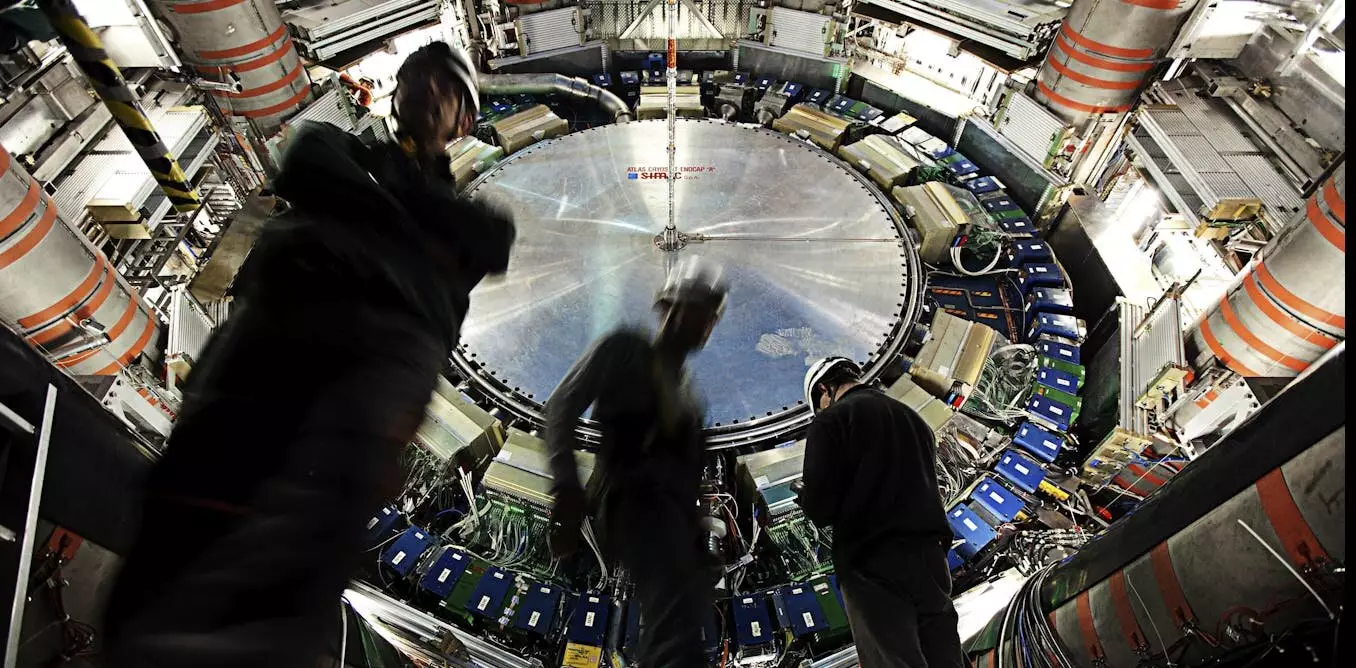At the forefront of modern physics lies the perplexing phenomenon known as quantum entanglement. This entails a peculiar relationship where two particles retain a mysterious connection, irrespective of the distance that separates them. Originally observed with photons, this enigmatic trait is now being scrutinized within the context of much heavier particles, particularly top quarks, which are explored extensively at the Large Hadron Collider (LHC) in Geneva. The recent findings from the ATLAS collaboration mark a significant leap forward in comprehending the fabric of reality and the underlying quantum principles that govern our universe.
At a fundamental level, quantum entanglement challenges our intuitive understanding of separateness and connectivity. In everyday terms, we easily categorize objects as either disjointed entities or closely associated ones. Think of two balls positioned kilometers apart; they are separate. Now, consider two balls linked by a string, which represents a clear connection. Quanta, however, exist in a peculiar state of being neither wholly separate nor distinctly connected. A measurement conducted on one entangled particle instantly implicates the other, creating a cohesive system without any form of physical linkage.
The LHC’s ATLAS experiment has produced groundbreaking results, identifying entanglement in pairs of top quarks. These exceptional particles are among the heaviest identified in physics, with a mass surpassing that of a tungsten atom, making them instrumental in uncovering the mechanisms of our universe. This discovery is not just an impressive feat of experimental physics; it opens doors to potential advancements in quantum communication and computing.
Historically, entanglement was best documented in photons, which made it a more approachable subject for scientific inquiry. However, top quarks pose different experimental challenges due to their massive size and the immense energy levels involved. This new advancement attests to the versatility of quantum phenomena, extending beyond traditional boundaries. The implications of researching such massive particles not only deepen our understanding of their unique characteristics but also hint at the existence of novel physical forces beyond the established four: gravitational, electromagnetic, strong, and weak interactions.
The quest to unravel the mysteries surrounding the top quark is a significant focus of contemporary particle physics. Since the understanding that atoms consist of protons and neutrons, which in turn comprise quarks, the top quark emerges as the most massive of its kind, invoking a series of questions regarding its existence and characteristics. Scientists have theorized the presence of exotic new forces possibly at play due to the quark’s exceptional mass.
Despite advances in theoretical frameworks and experimental findings, the core enigma remains unsolved: Why is the top quark so heavy? This question not only challenges the Standard Model of particle physics but also invites broader contemplation regarding the nature of existence itself. Each measurement or observation related to the top quark brings us closer to potential revelations about undiscovered aspects of physical laws or interactions.
As inviting as the world of quantum entanglement is, it is worth noting the delicate nature of entangled states. The same principles that make entanglement a treasure trove for scientific exploration also render it extremely vulnerable to external influences. To observe these fragile states, experiments often require ultra-cold environments to minimize interference from extraneous particles.
This fragility underscores a significant difficulty in harnessing entanglement for practical technologies. The heavyweight nature of top quarks and their intricate entanglements can serve as a valuable experimental setting, but their application in accessible technologies remains speculative. The Large Hadron Collider, with its complex infrastructure, is not something one can easily replicate for everyday use. Yet, the insights gained from exploring these particles are invaluable, contributing to scientific knowledge and technological innovation.
The study of entanglement in top quarks heralds an exciting era for physicists and researchers alike. While the complexity of these massive particles presents unique challenges, the potential for discovering new physics principles is invigorating. Every measurement taken adds another piece to the intricate puzzle of the quantum world.
As scientists delve deeper into the relationship between quantum entanglement and high-energy particles like top quarks, we anticipate observing phenomena that hold the keys to our understanding not just of the subatomic landscape, but perhaps of the universe as a whole. The quest to decipher these enigmatic particles continues, and with it, the promise of unlocking fundamental truths of reality remains tantalizingly within reach.


Leave a Reply